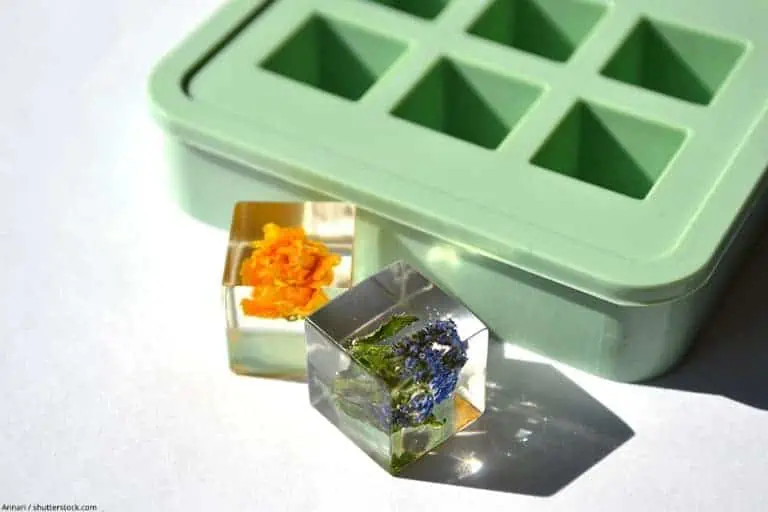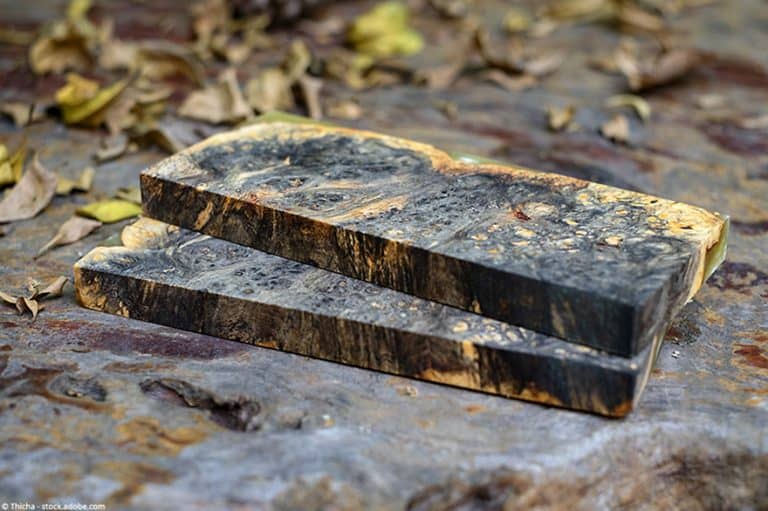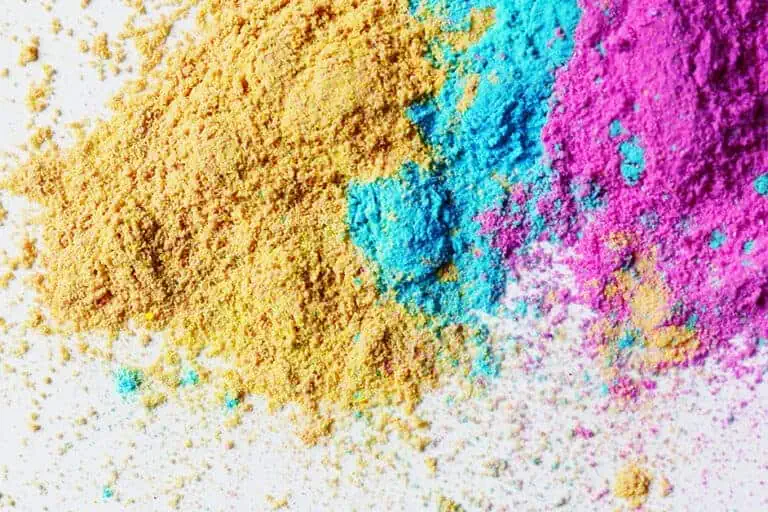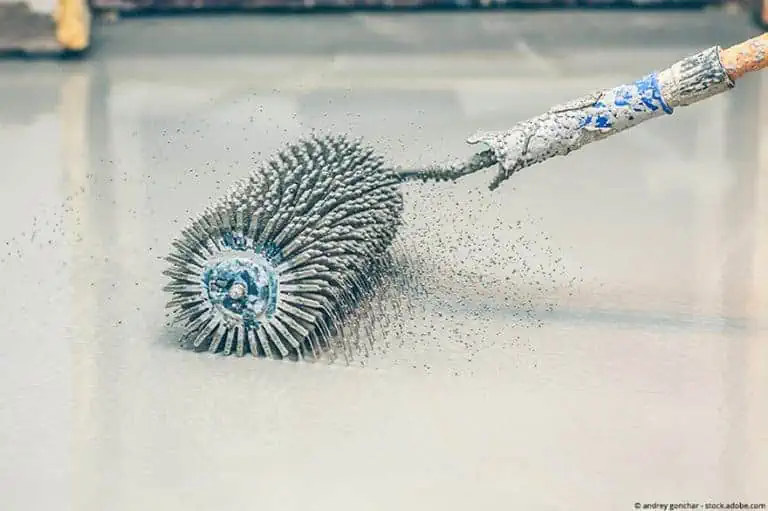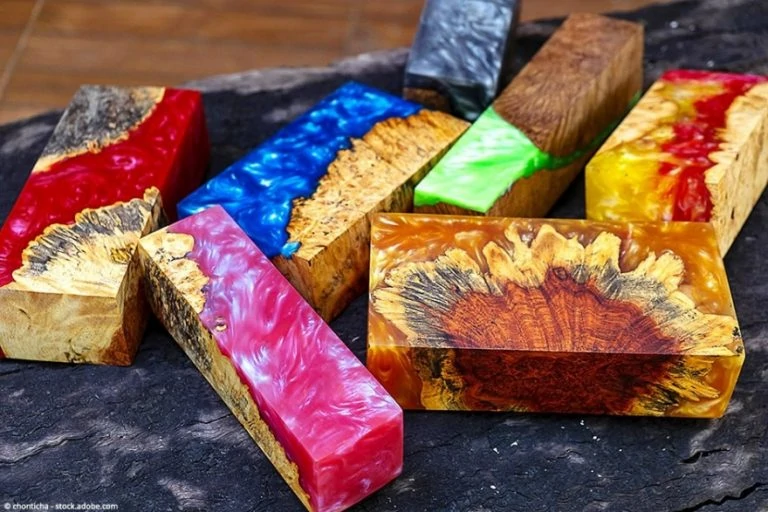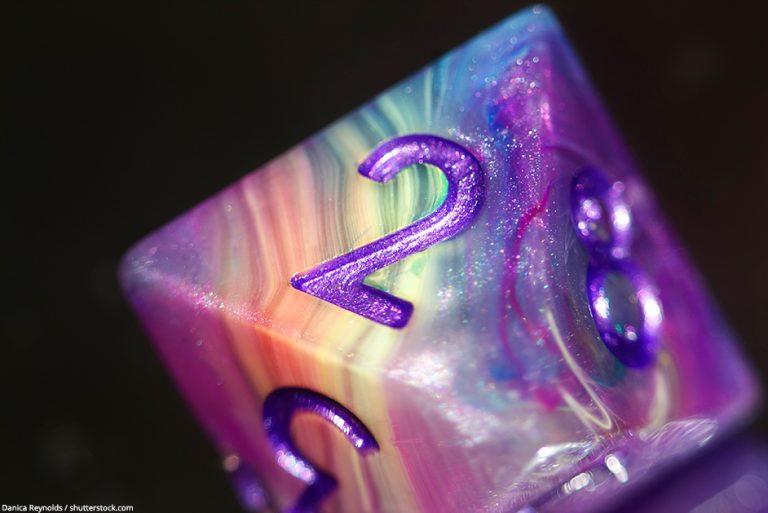Polyester Resin – What is Poly Resin or Fiberglass Resin?
This post may contain affiliate links. We may earn a small commission from purchases made through them, at no additional cost to you.
Epoxy resin has a variety of positive benefits when used for your DIY projects. Unfortunately, there are also two major drawbacks: this type of resin costs quite a bit and it has to be blended precisely to get the best results. If you are a beginner, this could pose a problem, and looking for an alternative might be a better option. This is where polyester resin comes in, we will be getting into all the interesting facts about poly resins. The article will also deal with what to consider when purchasing good quality polyester resin and we will be measuring it up against epoxy resin.
Table of Contents
- 1 A Closer Look at Polyester Resin
- 2 Properties of Poly Resins
- 3 Polyester Resin Applications
- 4 Epoxy Resin or Polyester Resin: What is Best?
- 5 Best Polyester Resin for your Projects
- 6 What to Consider when Purchasing Polyester Resin
- 7 What Materials are Needed for Application
- 8 How to Handle your Polyester Resin
- 9 Polyester Resin and Laminating
- 10 Creating a Mold with Clear Polyester Resin
- 11 Polyester Resin and Curing
- 12 Tempering Process
- 13 Including an Inhibitor
- 14 Adding Color to Polyester Resin
- 15 Safety Precautions when Working with Polyester Resin
- 16 Storing Polyester Resin
- 17 A few Tips when Using Polyester Resin
- 18 Questions and Answers
A Closer Look at Polyester Resin
What is poly resin? Poly resins are substances that can be used in a variety of ways including in the building of boats, the manufacture of different parts in model making, or in the production of ponds and swimming pools. Poly resins can also be used to create fiber composites, also recognized as a Duroplaste. These are different from thermoplastics because it is not pliable, neither can it be welded. There are two main categories for polyester resins, slow curing, and fast curing. Also, there are many curing stages in-between. This will in turn affect the mechanical and chemical properties of the final project because it impacts the cross-linking process while curing.
Properties of Poly Resins
Polyester resin is considered a synthetic resin and can have many different properties, depending on the application and types of filling agents. Color additives can also affect the outcome. You can read further under the pros of poly resins to discover more poly resin advantages. However, one of the more common properties is its ability to bond with glass fibers, as the polyester resin has a high saturation effect. Once a piece has fully cured, it becomes water and weather resistant and can also resist aqueous salt solutions and weaker non-oxidizing acids.
Note: There are also food-grade poly resins available, but always check with the manufacturer or read the technical datasheet to see if it does have this ability. The food-safe polyester resin should not produce any toxic materials and should not alter the taste of food.
Polyester Resin Applications
There are many applications, from creating molds to casting in molds, in building boats to casting gutters and bumpers. Poly resins are great for repairing plastic components. The clear polyester resin is used in Jacuzzis, ponds, swimming pools, and other outdoor applications. Other applications include:
- Homebuilding or construction materials
- Used in aircraft, vehicles, and the marine industry
- Packaging material
- Used in appliances
- In the manufacture of furniture, especially outdoor items
- Composite materials, for example, fiberglass resin

Epoxy Resin or Polyester Resin: What is Best?
Epoxy resin is best at resisting peeling, wearing, and cracking. Also, it is corrosion resistant and can also withstand environmental and chemical deterioration. Polyester resin is less durable than epoxy resin and is better suited for short-term fixes. The epoxy also costs more than the poly resins because of its ultimate durability and formulation prerequisites. Since we are dealing with Polyester resin, let us now have a closer look at some pros and cons:
Pros
- You can choose from a variety of reinforcement materials such as glass fiber mats or fabrics and glass filament fabric. These added items provide more stability. Epoxy resin, however, can also combine with glass filament as well as aramid and carbon fabrics
- Poly resins are less expensive, which is great for larger amounts. Compare prices for a better idea of costs
- The working time for polyester resin can be adjusted to your needs. Simply alter the amount of hardener when blending with the liquid resin. Always read and keep to the directions given by the manufacturer. You can add from 1.0 % to 2.5 %. When it comes to epoxy resin, the two-part components must be blended precisely, if not, the resin will not cure correctly and can become weak
- Since you can alter the working time, you have more flexibility and can focus a bit more on your design without having to rush things. You have a lot less time when working with epoxy resin
- Acceptable resistance to some chemicals and water
- Relatively low shrinkage
- Sufficient resistance to aging and weathering
Cons
- When it comes to the mechanical properties of poly resins, they fall below epoxy resins which are stronger in many ways. Epoxy resin can also be used on different surfaces, while polyester resin, may cost less, but cannot adhere to smooth surfaces like metal or glass
- The poly resins produce toxic fumes, which contain styrene. These fumes also linger, so it is better to work with these resins outside. Epoxy resin can be used inside, as it creates little or no fumes
- In boatbuilding, when compared to polyester resin, epoxy resin is more water-resistant
Best Polyester Resin for your Projects
Overall Best Polyester Resin: BONDO 3M Fiberglass Resin
No matter what kind of repair or rebuilding project you are doing, this polyester resin by Bondo offers the ideal solution. This resin can be used alone for resurfacing as a sealer. This works very well over old wood or damaged surfaces. It can also be utilized alongside fiberglass to create rigid structures.
- For repairing, resurfacing and rebuilding a range of materials, can be used as a sealer
- Compatible with all paints including gel coat and marine paint
- Use during the Fill stage of the 3M Body Repair System can be used alone or with fiberglass tape, cloth or mat
The Bondo 3M resin mixes easily and offers convenient use. Getting the right consistency doesn’t take too much effort. The robust resin can be painted over with just about anything once it has cured, and can be sanded down with minimal effort. This polyester resin can be used on a wide range of different surfaces – including wood, masonry, metal, and fiberglass. Once applied, you get a highly durable and long-lasting bond between the surfaces. It also features a waterproofing formula which makes it a great product choice for various resurfacing jobs.
Pros
- Easy to mix and use
- Dries quickly and efficiently
- The resin has strong adhesion properties for many surfaces
- Versatile, durable, and waterproof
- Can be used alone or with fiberglass
Cons
- Measuring out the resin could be easier
The Best Kit for Polyester Resin: POLYMER PLANET Fiberglass Repair Kit
If you are after a complete kit that contains everything you need for getting started with polyester resin work, then this option by Polymer Planet would be the best bet. This resin kit contains a gallon of resin with sufficient hardener, as well as a fiberglass mat. There is enough material here to work over a large surface area.
- 1 Gallon Polyester Resin and 0.75 oz CSM Fiberglass Chopped Strand Mat
- High quality Polyester Resin for all repairs on a wide variety of materials
The fiberglass mat included contains both loose and woven fibers which makes it possible to be used over curved and flat surfaces. It is also lightweight and easy to bend and control. Once covered with the resin, you get a durable and smooth fiberglass surface. Another benefit of this kit is that the resin will last slightly longer – giving you more working time. This does mean that the resin takes longer to fully cure. However, this can be adjusted using a heat applicator.
Pros
- Includes a versatile fiberglass mat
- The fiberglass is easy to shape and use
- The working time for the resin is long
- Cures to a durable finish
- Suitable for working over a large surface area
Cons
- There is more fiberglass sheeting than there is resin in this kit
Best Fiberglass Cloth: BONDO 3M Fiberglass Cloth
Working with polyester resin will require a quality fiberglass cloth for best results. This 3M fiberglass cloth by Bondo offers just the right qualities for great performance. There are interlocking strands on the fiberglass which help to cover up holes effectively. This also makes the fiberglass easier to cut down to size with scissors and can be used on all kinds of projects.
- Use for repairs of holes or cracks in fiberglass, wood and metal
- Works for repairing automobiles, boats, tubs, showers, sinks, pools, hot tubs and more
- Waterproof and paintable
This fiberglass is fully waterproof and works very well for waterproofing certain areas or covering up holes or cracks. The cured product can be sanded down pretty easily and painted over with all kinds of paints. The fiberglass can be used over all kinds of different surfaces and areas. It offers excellent structure and durability when combined with polyester resin, while still being easy to work with. This is thanks to its thinner qualities.
Pros
- Waterproof and durable
- Thin and easy to work with
- Suitable for a wide range of different surfaces
- Provides a strong repair solution
Cons
- When cutting the cloth, the threads can come apart
What to Consider when Purchasing Polyester Resin
Depending on your project, it is a good idea to know what to look out for when buying poly resins.
- Always go for reputable, well-known, and reliable manufacturers. It does not pay to go for the cheapest option, as the final result may not cure correctly, and your project will be ruined.
- When it comes to mold making and laminating, the glass fiber mats come in varying thicknesses. Also, there many different polyester resin products and it can be overly complicating. It is best to do a bit of research on the subject, especially if you are a beginner. Inform yourself, this will pay off in the end
What Materials are Needed for Application
What you need will depend on what you are doing, but the basic supplies include the following. We will also have a look at how to handle polyester resin, laminating, and creating a negative mold using polyester resin.
Materials needed:
- Suitable Polyester resin
- May need priming wax, this is for porous surfaces
- Acetone
- Glass fiber mats, you might need a variety of thicknesses
- Soft brush or sponge
- Film release agent
- Plastic spatula
- Digital scale
- Venting Roller
- Gelcoat / fine layer resin
- Protective gloves
- Color pigment/s
- A knife and scissors
- Single-dose syringe
- Respirator mask
- Putty
- Measuring cup
- Stirring sticks
- Plastic wedge
Gather all the materials before you begin working, you want everything at hand when you are busy with the resin.
How to Handle your Polyester Resin
- Make sure the surface you are working with is clean, remove any dirt, grease, or dust
- Sand the surface and clean off any grease with acetone
- If using a mold, apply a release agent, which will aid in the removal of the resin casting

- On a porous surface, like wood, apply a layer of primer wax
- Blend your two-part polyester resin thoroughly. Rather start with a smaller batch, make up an amount that can be used in about 15 minutes, as it will begin the harden. However, this all depends on the amount of hardener used
- To get the correct amount of resin needed, you can weigh the resin and hardener or calculate the amount. Mix thoroughly and scrape the sides and the bottom of your container to blend properly. Pour from one container to a different one, do this a few times to ensure everything is thoroughly blended. Also known as repotting
- Apply the resin

Images: johzio / shutterstock.com
The entire process depends on the application, so we are going to now have a look at laminating and creating a mold. Molds come in both positive and negative forms, negative molds are great for things like model making or car body parts. Positive molds are used more for pond and swimming pool manufacturing.
Polyester Resin and Laminating
- The surface you are repairing, or laminating should first be prepared and cleaned
- Apply a layer of polyester resin onto the surface or substrate
- Take your prepared glass fiber mat and lay it on top of the resin
- You can use a brush on the fiberglass mat, a roller will also work
- You can get cut or frayed glass fiber mats, the frayed option works better when dealing with overlaps
- Apply a second coat of resin, the polyester fiberglass resin will be pliable and can be formed
- Make sure that while you are applying the resin, no glittery or white areas remain. This means there is either not enough or too much resin
- Once the entire surface is covered by fiberglass resin, you can then remove any bubbles using the brush or roller. If you are busy with a fairly large area, you can use a specialized ventilation roller.
- After everything has dried properly, you can paint a topcoat of polyester resin. This will weatherproof the area. First, you will need to do a bit of sanding before painting. During this step, you can also add color pigment to the resin
- As soon as you are done, you will need to clean your work tools. Some resin would have remained on the surface of your tools, so remove as soon as possible with some acetone. If the resin dries, the only way you can remove it is if you sand it off
Creating a Mold with Clear Polyester Resin
- Ensure your master mold is clean and smooth, you do not want any corners or overhangs. Doing this now will ensure less work later with extra milling and grinding during finishing
- Seal any joints with plasticine, press pieces in, and remove excess with a knife
- Next, apply some release wax and release agent
- Apply the Gelcoat in a single direction to avoid the presence of air
- Put on the glass fiber mat and then apply the polyester resin
- Allow to gel slightly. You can test by seeing if it still pulls any threads
- Carry on doing layer by layer while each coat is still wet
- Finally, let the mold completely harden and cure
- Remove the mold with the plastic wedge
Polyester Resin and Curing
The curing time for the polyester resin is mainly dependent on the product, but also a few other things. You can have a look at the manufacturers’ datasheet, which should come with the product you bought.
Other factors affecting the curing time include:
- The environment and temperature
- Shape and size of the project
Most synthetic resins available fully cure at 20°C to 25°C, but others need higher temperatures and, these are treated with heat. Also known as tempering.
Tempering Process
The polyester resin goes through a chemical process when curing, becoming thicker until it achieves a gelling point. The resin then becomes fully hard or completely cures. When higher temperatures are produced, the pot time or working time is reduced. This is because the resin is less viscous. In cooler temperatures, the working and curing time are increased, sometimes up to seven days.
Note: When a focused and even heat is applied, this can advance the composition to augment the mechanical properties. When applying this tempering process, you should remove any air bubbles that form. This is to inhibit any weakening in the final structure.
Including an Inhibitor
If you are looking to increase your processing time, adding an inhibitor is one way of doing this. These chemical compounds will then set back the process of curing. This is especially helpful if you are working with a substantial amount of polyester resin. How many inhibitors should you add? The general rule is if you include 0.2% of inhibitor, you will be doubling your processing time. Add 0.5% and it increases. We do not recommend adding the inhibitor to the gelcoat, as it may affect its structure.
Adding Color to Polyester Resin
Polyester resin can be colored just like epoxy resin but be mindful, as the colors can affect the structure of the final finish. Synthetic resins involve a delicate balance of hardener and resin. By including other elements, could upset this balance and create changes in the structure and appearance of the resin.
In other words, when adding color, these will influence the resin viscosity, which then affects the process of curing. Therefore, always make sure you use suitable color elements, specifically designed color pigments and pastes for polyester resin. Also, in most cases, the original color might differ from the color in the resin once it has cured. So, to achieve the results you want, it might be necessary to carry out a few test samples before heading off to your main project. This might sound tedious, but it will save money and time.
Three ways to add your color:
- Dumping
- Stir the color in
- Slow dripping
Take note when the resin viscosity changes, this might be a bit difficult at first but with experience, you should get it right. When adding color to more viscous resin, you will find it difficult to blend the color uniformly. Also, if the resin is too thin, the color will form streaks.
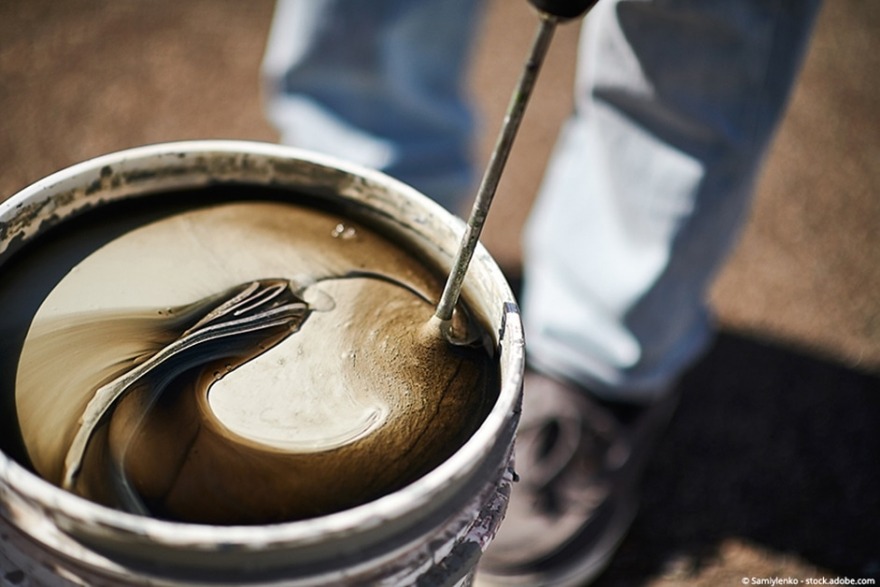
Safety Precautions when Working with Polyester Resin
The polyester resin in its liquid form is toxic, so taking some precautions are necessary. Make sure your workspace is well-ventilated, or even better work outside. Wear a respirator mask, protective eyewear, gloves, and clothing. Your skin should never come into direct contact with the resin.
Do not work in living spaces like the living room, as the resin gives off toxic fumes during the curing process. Do not work with resin near an open fire or smoke while working. Try to avoid getting any polyester resin on surfaces you are not working on, as it is difficult to remove once cured. Lay some newspaper around your workspace to prevent this. However, if the resin has not cured yet and you act quickly, you can remove it with acetone. Unfortunately, the resin cannot be removed if it lands on a porous surface.
Note: If you are using a cobalt accelerator and ketone peroxide during cold curing, always add the two elements one at a time. Never add them and blend at the same time, as it will cause deflagration.
Storing Polyester Resin
Once you are done working, close the resin containers and store them in a cool dark place. Store the resin in its original container, do not place it in a new one. This should help keep the resin for at least six months if at room temperature. Some products like MEKP hardeners need to be used soon, as it could begin to absorb water. This, in turn, could affect the structure of the top layers once applied.
A few Tips when Using Polyester Resin
- Those just starting with resins may find polyester resin easier to blend and cheaper to buy. Although, safety must be taken into account
- When working with polyester resin castings and there are seams or noses, use a sharp tool like a knife or a file to remove. There are also different saws you can use, but wear a respirator and work in a well-ventilated space, as fumes are produced due to the friction
- You can use a release agent on surrounding surfaces when working with polyester resin. This makes it easier to remove any spots when you are done
- Right-angles are never good when using polyester resin, as it forms a weak spot. To prevent this issue, you should try using a hollow trowel
- Apply a protective layer over your cured resin to make it weatherproof and resistant to UV light. Can also protect the resin against things like chlorinated water in pools
- During the curing process, protect your project from UV light exposure. This could damage the structure and ruin the finish
- When using polyester resin over a larger area, you will have a longer processing time, as it does not heat as quickly. To make it easy to mix the resin and hardener, use a flat broad tub or pour the already mixed resin into the tub for a better mixing process

Questions and Answers
Is Polyester Resin Combustible?
Yes, they are flammable with a flashpoint of 32° (90°F), only if it has a styrene monomer. Other resins that have methyl methacrylate monomer tend to have lower lash points, all depending on how much there is present. There is a chemical reaction between the resin and hardener during the curing process. This is called an exothermic reaction. If this reaction becomes uncontrollable, it can start to foam and give off smoke and noxious gases. It could produce enough heat to melt the container it is in and can even trigger nearby items to ignite.
What are the Uses for Polyester Resin?
Polyester resins can be used as a bulk molding compound, in sheet molding, and as the toner of a laser printer to name a few. First, what is poly resin? These are unsaturated synthetic resins formed by a reaction of polyhydric alcohols and organic acids. It can take many forms and is valuable in a variety of industries.
Is Polyester Resin the right Choice for my Project?
This will depend on the type of application; the polyester resin is perfect for minor repairs that are gel coated. When compared to epoxy resin, poly resins do appear to be less superior. It acts as a passable adhesive but does meet epoxy resin standards. Polyester resin has a weaker bond than epoxy, which makes epoxy a better choice for things like fiberglass resin repairs.
Are Poly Resins hazardous?
Yes, when working with polyester resin and you do not follow the prescribed safety procedures, it can cause problems. These include things like burns, skin, and allergic reactions. Breathing it in can also cause various health issues. The styrene and organic peroxides present can cause burns, and styrene is also considered a carcinogen. Always wear a respirator, protective goggles, and clothing. Also, work in a well-ventilated space.
How can you Identify Polyester Resin?
Mostly, the synthetic resins appear thick and are pale in color. The liquid is made up of polyester in a monomer, typically styrene. By adding styrene, sometimes up to 50%, aids in reducing the viscosity which can then be processed more easily.
What Differences are there between Polyester Resin and Fiberglass Resin?
Fiberglass is a type of glass mat and is obtainable in various structures. Polyester resin is used to saturate the mat or cloth, it then becomes polyester fiberglass resin. Epoxy resin can also be used in this way, but over time polyester resin has somehow gained the title of fiberglass resin.
Following our advice and keeping to the rules when using polyester resin, you will be able to construct amazing ideas and projects.
In 2005, Charlene completed her wellness degrees in therapeutic aromatherapy and reflexology at the International School of Reflexology and Meridian Therapy. She worked for a company offering corporate wellness programs for several years before opening her own therapy practice. In 2015, she was asked by a digital marketer friend to join her company as a content creator, and it was here that she discovered her enthusiasm for writing. Since entering the world of content creation, she has gained a lot of experience over the years writing about various topics such as beauty, health, wellness, travel, crafting, and much more. Due to various circumstances, she had to give up her therapy practice and now works as a freelance writer. Since she is a very creative person and as a balance to writing likes to be active in various areas of art and crafts, the activity at acrylgiessen.com is perfect for her to contribute their knowledge and experience in various creative topics.
Learn more about Charlene Lewis and about us.





